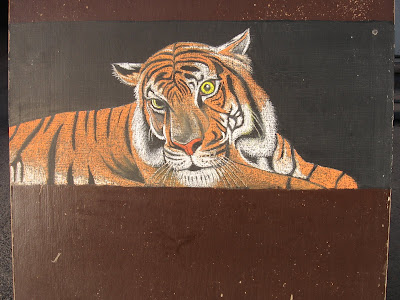Like its angle wing cousins, the Compton Tortoiseshell (Nymphalis vau-album) overwinters as an adult and is one of our earliest spring butterflies. Some other butterflies apt to be encountered on warm late winter and early spring days while there is still snow on the ground are ...
Eastern Comma (Polygonia comma)
Milbert's Tortoiseshell (Aglais milberti)
Mourning Cloak (Nymphalis antiopa)
Question Mark (Polygonia interrogationis)
Butterflies often frequent mud puddles, sipping on the water for trace chemicals. After pursuing this subject from one puddle to another for about half an hour without acquiring so much as a single photo, it discovered us – like many butterflies, it was attracted to the scent of human perspiration. This is the insect fueling up its energy reserves by sucking the sweat from my friend's boot.

A lateral shot, it's still on his boot. The undersides of the wings are wonderfully camouflaged, bearing an almost perfect resemblance to bark, with ragged edges to accentuate the effect.

The Compton Tortoiseshell lapping up perspiration from my right hand ... it sure was fun trying to take a photo left handed ...

... and now it's on my left hand, the butterfly just kept following us around and landing on us. I practically had to swat it to get it to leave me alone.

A lateral view of the butterfly on my finger, again showing the irregular profiles of the wings – another aid in fooling potential predators into thinking the insect is a piece of bark. I had picked and crushed a Balsam Poplar bud a few minutes earlier and now the insect is attracted to the fragrant scent of the sap.

A closeup of the butterfly's proboscis.

An oblique view of the proboscis – I never thought to make a video, it was in constant motion as the butterfly was eating.



































